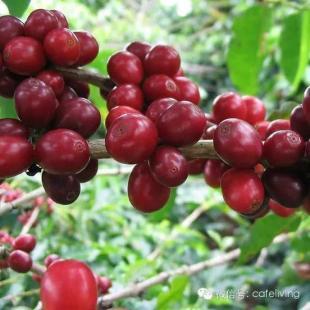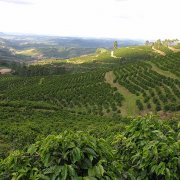The unique charm of SL28 flavor the source meaning of SL28 name

Freshly processed SL-28 and SL-34 beans. [photo: counter-cultural coffee on Flickr]
Genetic diversity among coffee plants is one of the most exciting coffee tasters of all stripes. Although the gene pool of Arabica coffee has become shallower and shallower outside Ethiopia, at least one type of coffee is exciting: if you don't encounter it, the Kenyan variety SL28 can definitely fascinate you.
First of all, how could such a robotic name have such an impact on coffee-loving people everywhere? Well, don't be weird about the weird naming of coffee: it comes from the fact that the breed was investigated by Scott Lab, which was hired by the Kenyan government in the 1930s and the catalogue type of coffee is the best because of its drought resistance, productivity and cup quality, suitable for commercial development there. Scott Labs collects data, allocates specific numbers of varieties, and reports that two strains, now known as SL-28 and SL-34, are the best bets in the country in terms of economy and agriculture. As you may have guessed by now, "SL" stands for Scott Labs. )
Although SL-34 is more common in lower height growth than its siblings, SL-28 is the most cherished by coffee people. Unlike most coffee in other parts of the world, the complexity and dazzling acidity of this variety (reminiscent of blackcurrants and other fresh summer-ripe tomatoes), soil and treatment are often mentioned in the discussion of Kenyan coffee. A juicy body and super sweet, almost tropical flavor are driving SL-28 enthusiasts crazy.

Sort beans in Kenya. [photo: counter-cultural coffee on Flickr]
Coffee first reached the taste, complexity and path of Kenya, and conducted a comprehensive exchange on the causes of coffee flavor. If all coffee starts in Ethiopia, their diversity will be reduced to a handful, and subsequent changes and inbreeding will cause cups to change over time. So what happens when the resulting plants are brought to Kenya, which shares the border with coffee's birthplace?

I'm not a coffee botanist, so I don't have any answers as to why Kenyan coffee tastes so similar to coffee from Bourbon, Latin America and even Ethiopia. However, what I can answer is that SL-28 has some of my favorite flavors, while the boy hey, I can go for a drink now. What about you?
Important Notice :
前街咖啡 FrontStreet Coffee has moved to new addredd:
FrontStreet Coffee Address: 315,Donghua East Road,GuangZhou
Tel:020 38364473
- Prev

The Origin of the name of Celia Coffee beans introduction to the flavor of 90+Level 95 coffee beans
Siria Sillvia Solkiln N2 Level 95: Sillvia Coffee is the result of our first Solkiln treatment of coffee from plot 11 in Rosa Manor in 2012. All the coffee in this plot was processed at the same time, but in the end only 25 kilograms of coffee with special flavor was successfully obtained. In 2013, we learned that in this season
- Next

Common coffee varieties Daquan Coffee comes from Iron pickup Coffee beans
Coffee varieties detail Acai: a rare Mundo Novo mutation found mainly in Brazil. Anacafe 14: a spontaneous Catimor-Pacamara hybrid further developed and released by Anacafe in 2014. This variety is considered to be rust-proof and produces high cup quality. Anton sari (Andong Sari): popular from Colombia to Indonesia
Related
- Guji coffee producing area of Guji, Ethiopia: Humbela, Shakiso, Wulaga
- What is the most expensive variety of Qiloso in BOP multi-variety group?
- How to store the coffee beans bought home?
- Why are Yemeni coffee beans so rare now?
- Ethiopian Sidamo all Red Fruit Sun Sun Santa Vini Coffee beans
- SOE is mostly sour? What does it mean? Is it a single bean? what's the difference between it and Italian blending?
- Is Italian coffee beans suitable for making hand-brewed coffee?
- How to choose coffee beans when making cold coffee? What kind of coffee beans are suitable for making cold coffee?
- Just entered the pit to make coffee, what kind of coffee beans should be chosen?
- Can only Japan buy real Blue Mountain Coffee? What are authentic Jamaican Blue Mountain coffee beans?

